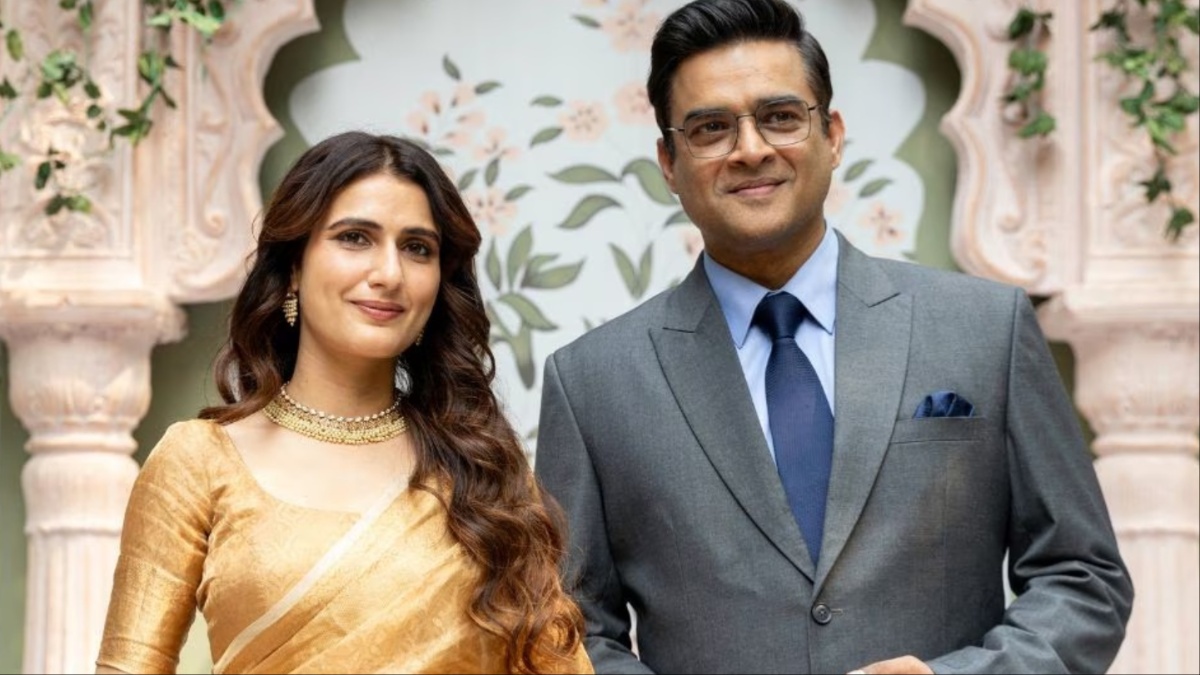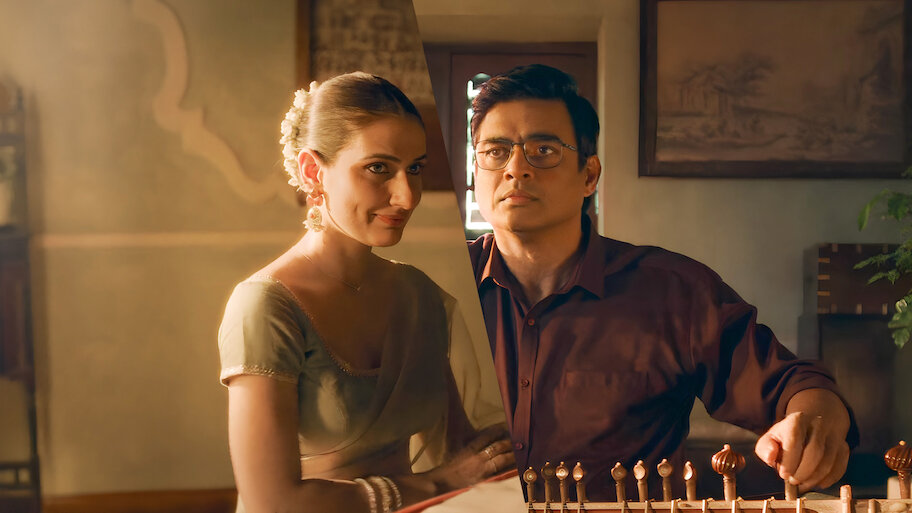The Indian film industry is abuzz with the release of “Aap Jaisa Koi”, a Netflix original that unites the talents of R. Madhavan and Fatima Sana Shaikh. Released in July 2025, this romantic dramedy is trending across India, sparking conversations about age, love, gender roles, and the evolving face of Bollywood storytelling. Directed by Vivek Soni and produced by Dharmatic Entertainment, the film is being celebrated as a fresh, feminist take on companionship and societal expectations.
Here are seven surprising truths that make “Aap Jaisa Koi” a must-watch and a hot topic in Indian pop culture.

1. A Bold Story of Love Beyond Age and Conventions
At its heart, “Aap Jaisa Koi” tells the story of Shrirenu Tripathi (R. Madhavan), a 42-year-old Sanskrit professor in Jamshedpur, and Madhu Bose (Fatima Sana Shaikh), a 32-year-old French instructor from Kolkata. Their unlikely romance begins with an arranged meeting but quickly evolves into a tender, unconventional love story that challenges societal norms about age, marriage, and compatibility.
-
Premise: Shrirenu, a reserved bachelor, believes he’s cursed never to marry after a childhood rejection. Madhu, independent and outspoken, doesn’t judge him for his age or background. Their connection is tested by family expectations, patriarchal attitudes, and a sex-chat app that throws their engagement into chaos.
-
Backdrop: The narrative is set against the pastel-hued streets of Kolkata and the earthy tones of Jamshedpur, lending the film a poetic, vintage charm.
2. R. Madhavan and Fatima Sana Shaikh’s Chemistry Shines
The film’s emotional core is powered by the nuanced performances of its leads:
-
R. Madhavan delivers a restrained, heartfelt portrayal of Shrirenu, capturing the loneliness, vulnerability, and quiet hope of a middle-aged man searching for love.
-
Fatima Sana Shaikh brings depth and feistiness to Madhu, embodying a modern woman unafraid to voice her desires and challenge stereotypes.
-
Their on-screen chemistry is natural and understated, making the romance feel authentic and relatable.
Supporting actors like Ayesha Raza, Manish Chaudhari, and Namit Das add layers to the family dynamics and subplots, with Ayesha Raza’s performance as Kusum—a woman seeking her own identity after decades of marriage—standing out.
3. A Feminist Lens on Love, Desire, and Patriarchy
“Aap Jaisa Koi” distinguishes itself by exploring romance through a distinctly feminist perspective:
-
The film questions why women are judged for their desires, independence, or past relationships, while men are rarely held to the same standards.
-
It tackles issues like misogyny, masculine hypocrisy, morality, extramarital affairs, and gender roles, all while maintaining a light, often humorous tone.
-
The narrative avoids preachiness, choosing instead to “show, not tell,” allowing viewers to draw their own conclusions about equality and companionship.

)
4. A Realistic Portrayal of Middle-Class Indian Life
The story’s setting in Jamshedpur and Kolkata grounds the film in the realities of middle-class India:
-
The Tripathi family is depicted with authenticity, from the overbearing elder brother to the sister-in-law yearning for more from life.
-
Everyday details—like family pressure to marry, job struggles, and the stigma around unmarried adults—are woven seamlessly into the plot.
-
The film also highlights the generational divide in attitudes toward love, sex, and personal freedom.
5. Direction, Music, and Cinematography: A Sensory Treat
Director Vivek Soni crafts a film that is visually and emotionally evocative:
-
Cinematography by Debojeet Ray captures the old-world charm of Kolkata and the intimacy of small-town life, using color transitions to reflect the characters’ emotional journeys.
-
Music by Justin Prabhakaran and Rochak Kohli enhances the film’s mood, with standout tracks beautifully underscoring moments of hope and heartbreak.
-
The use of silence, piano symphonies, and sitar melodies adds to the film’s poetic quality.
6. Critical Reception: Praise and Constructive Critique
The film has sparked lively debate among critics and audiences:
Positives:
-
Strong chemistry between the leads and authentic performances.
-
Realistic dialogues and preservation of cultural nuances, especially the Bengali accent and Kolkata’s ambiance.
-
Visually appealing cinematography and a memorable soundtrack.
-
A refreshing, non-preachy approach to feminist themes.
Negatives:
-
Some critics cite a weak screenplay, with the story occasionally losing direction and side characters underutilized.
-
The pacing is described as languorous, with a few viewers finding the ending emotionally underwhelming or abrupt.
-
Comedy elements are hit-or-miss, and some subplots feel undercooked.
Despite these critiques, the consensus is that “Aap Jaisa Koi” is a sweet, necessary addition to contemporary Indian cinema.
7. Cultural Impact and Trending Status
“Aap Jaisa Koi” is more than just a film—it’s a conversation starter:
-
The movie is trending on Netflix and social media, with viewers praising its bold take on relationships, gender roles, and the realities of modern love in India.
-
Its release has reignited discussions about age gaps in relationships, the pressures of marriage, and the right to personal happiness, especially for women in conservative families.
-
The film is being compared to other progressive Bollywood romances but is lauded for its subtlety and lack of melodrama.
-
For many, the film’s greatest achievement is normalizing conversations around equality, desire, and companionship for all ages and backgrounds.


Cast and Crew Table
| Role | Name |
|---|---|
| Director | Vivek Soni |
| Producers | Karan Johar, Apoorva Mehta, Somen Mishra |
| Writers | Radhika Anand (Story/Screenplay), Jehan Handa (Dialogue) |
| Lead Cast | R. Madhavan (Shrirenu Tripathi), Fatima Sana Shaikh (Madhu Bose) |
| Supporting Cast | Ayesha Raza, Manish Chaudhari, Namit Das, Divyam Dubey |
| Cinematography | Debojeet Ray |
| Music | Justin Prabhakaran, Rochak Kohli |
| Editor | Prashanth Ramachandran |
| Production | Dharmatic Entertainment |
| Platform | Netflix |
| Release Date | 11 July 2025 |
Plot Summary
Shrirenu Tripathi, a 42-year-old Sanskrit teacher in Jamshedpur, is resigned to bachelorhood after a childhood curse. His family, especially his sister-in-law Kusum, is determined to find him a match. Enter Madhu Bose, a 32-year-old French teacher from Kolkata, who is independent, outspoken, and refreshingly non-judgmental. Their arranged meeting quickly blossoms into love, but their engagement is thrown into turmoil by a sex-chat app scandal and the judgment of their families.
The film explores how both characters—and their families—navigate the fallout, confronting issues of trust, gender roles, and personal happiness. The narrative is peppered with moments of humor, heartbreak, and self-discovery, ultimately advocating for love that transcends societal boundaries.
Themes and Social Commentary
-
Equality in Relationships: The film insists on partnership based on mutual respect and understanding, rather than patriarchal norms.
-
Women’s Autonomy: Madhu’s character challenges the notion that women must conform to societal expectations about marriage, sexuality, and career.
-
Family and Tradition: The story highlights the tension between tradition and personal freedom, especially in the context of Indian middle-class families.
-
Age and Love: By centering on an older bachelor and a younger, independent woman, the film normalizes age-gap relationships and challenges stereotypes about “age-appropriate” love.
Behind the Scenes
-
Production: Developed by Dharmatic Entertainment, the film was shot in Kolkata and Jamshedpur, capturing the essence of both cities.
-
Direction: Vivek Soni, known for his sensitive storytelling, brings a gentle touch to the film’s complex themes.
-
Music and Visuals: The soundtrack and visuals play a crucial role in setting the film’s tone, with music directors Justin Prabhakaran and Rochak Kohli receiving special praise.
Audience Reactions and Social Media Buzz
-
Viewers are celebrating the film’s progressive message, relatable characters, and the chemistry between Madhavan and Fatima Sana Shaikh.
-
Many are sharing personal stories about age, love, and breaking free from societal pressures, inspired by the film’s narrative.
-
The film is being discussed for its feminist undertones, realistic portrayal of Indian families, and the way it handles sensitive topics without resorting to melodrama.
Conclusion
“Aap Jaisa Koi” stands out as a refreshing, heartfelt exploration of love, equality, and self-acceptance in modern India. With its strong performances, poetic visuals, and meaningful social commentary, the film is both a mirror and a challenge to traditional norms. As it continues to trend on Netflix and spark conversations nationwide, “Aap Jaisa Koi” proves that there is no age, background, or rulebook for finding true companionship—only the courage to embrace love on your own terms.
Whether you’re a fan of romantic dramas, a seeker of progressive cinema, or simply looking for a story that resonates with today’s India, this film offers a moving, memorable experience that’s sure to linger long after the credits roll.
The film’s nuanced approach to romance and family dynamics has resonated strongly with audiences who are seeking authenticity in storytelling. Rather than relying on grand gestures or melodramatic twists, “Aap Jaisa Koi” finds its emotional power in everyday moments—awkward first meetings, quiet conversations, and the subtle shifts in relationships that define real love. This grounded portrayal has struck a chord with viewers who see their own experiences reflected on screen.
Another notable aspect is the film’s depiction of women’s agency and voice within the family structure. Madhu’s character is unapologetically independent, challenging not just her partner but also the expectations of her in-laws and society at large. Her journey is not about rebellion for its own sake but about carving out space for her desires and opinions, which adds depth and relatability to her role.
The supporting characters, especially Kusum and the extended Tripathi family, bring additional layers of complexity to the narrative. Their struggles, dreams, and disappointments are woven into the main plot, offering a broader commentary on generational change and the evolving definition of happiness in Indian households. These subplots enrich the film, making it more than just a love story.
Ultimately, “Aap Jaisa Koi” stands as a testament to the changing tides in Indian cinema, where stories of unconventional love and self-discovery are finding mainstream acceptance. The film’s success signals a growing appetite for narratives that challenge stereotypes and celebrate individuality, marking a positive shift in how relationships and personal growth are depicted on screen
Follow: Aap Jaisa Koi

